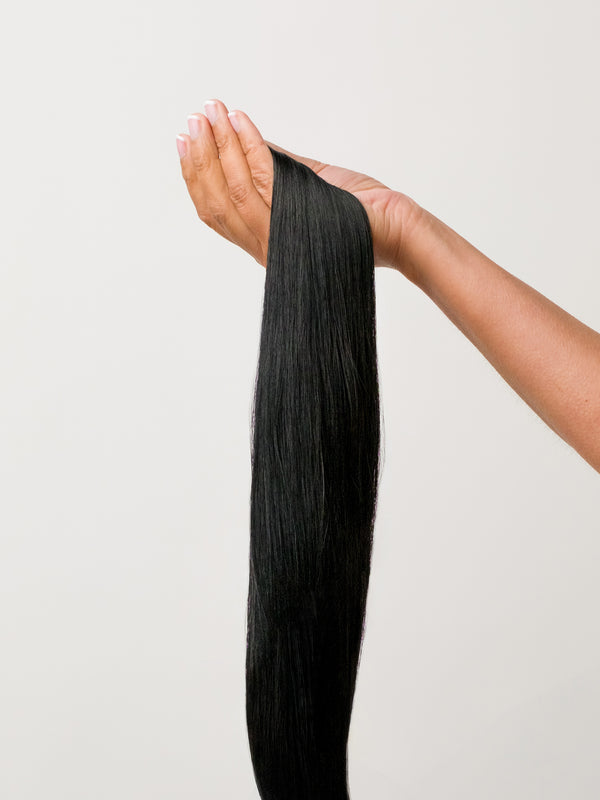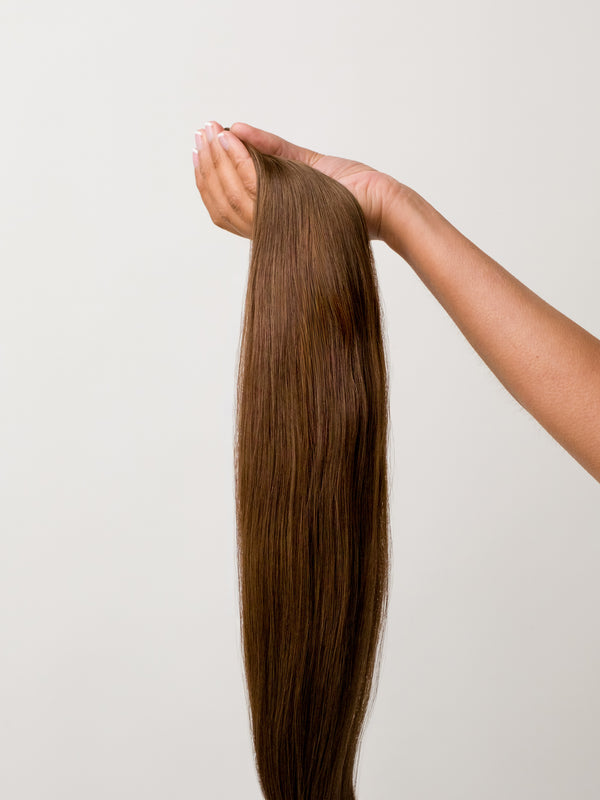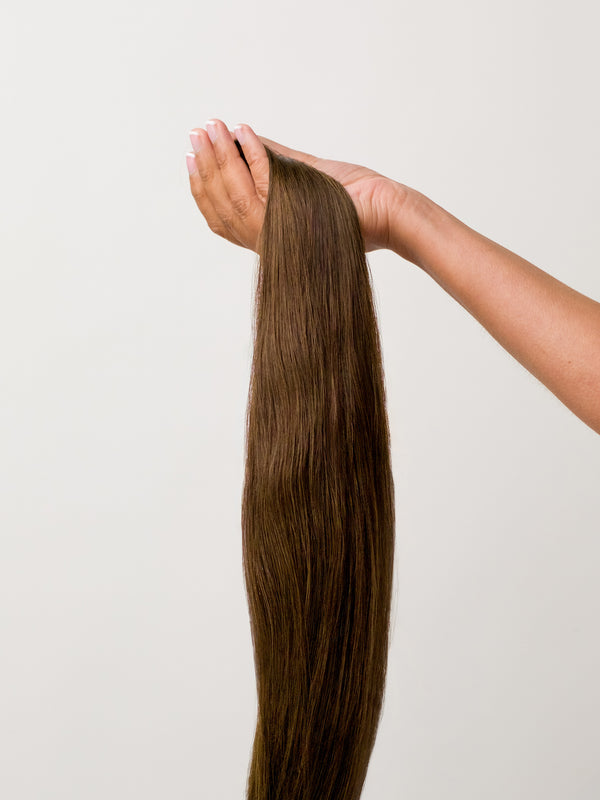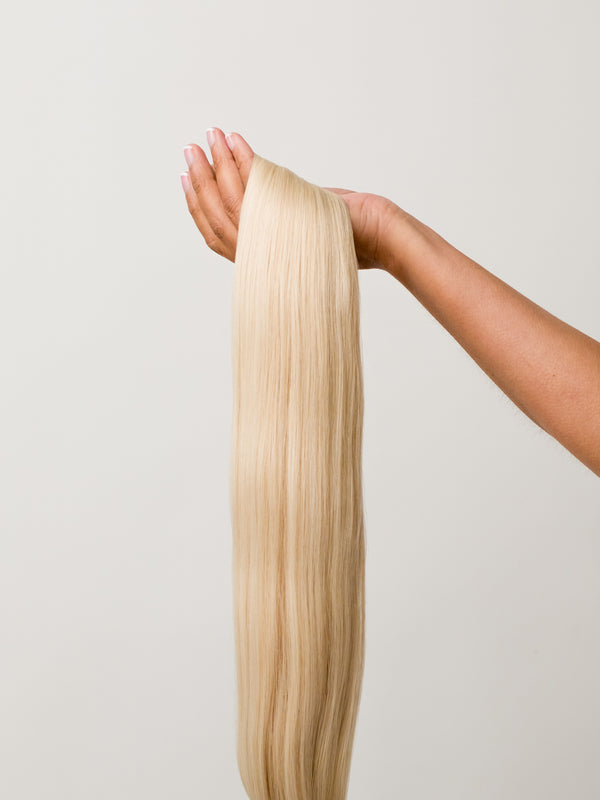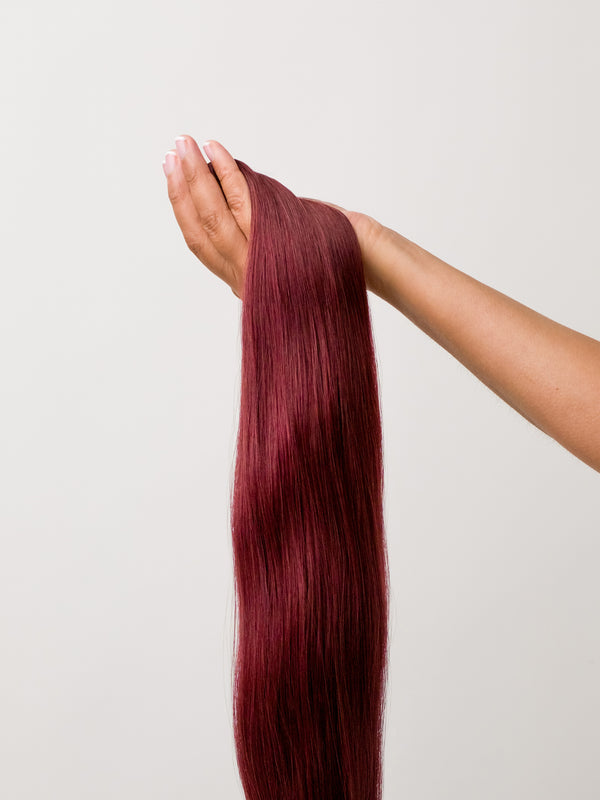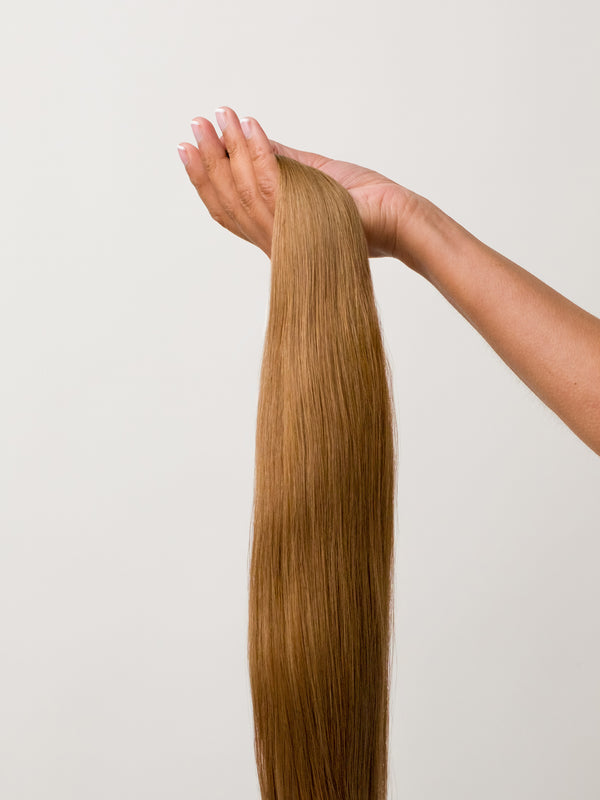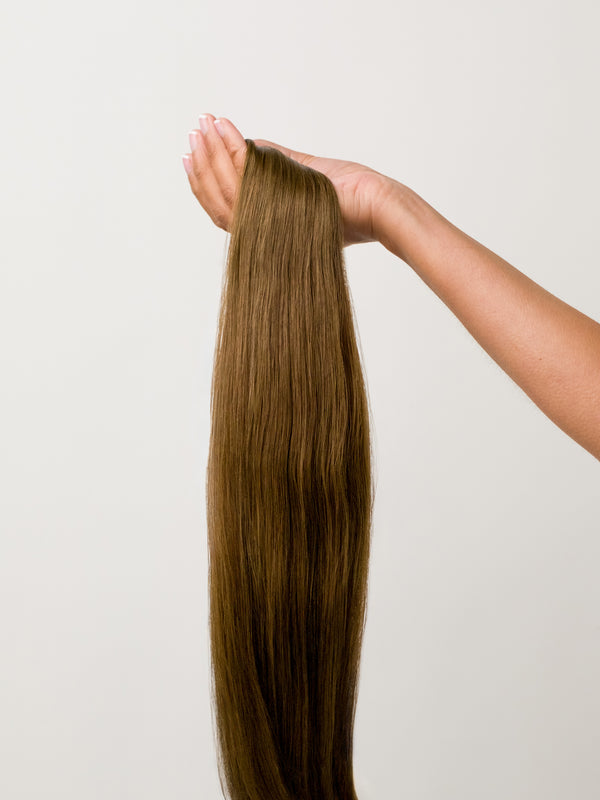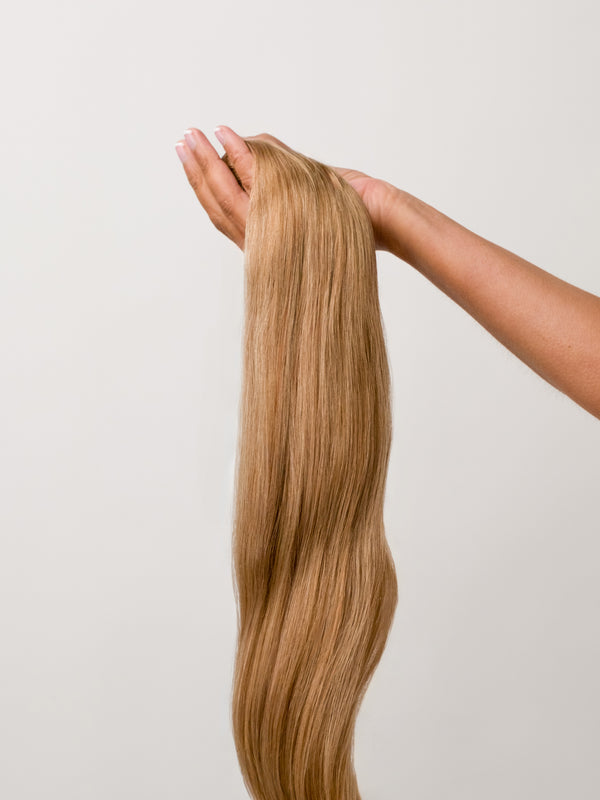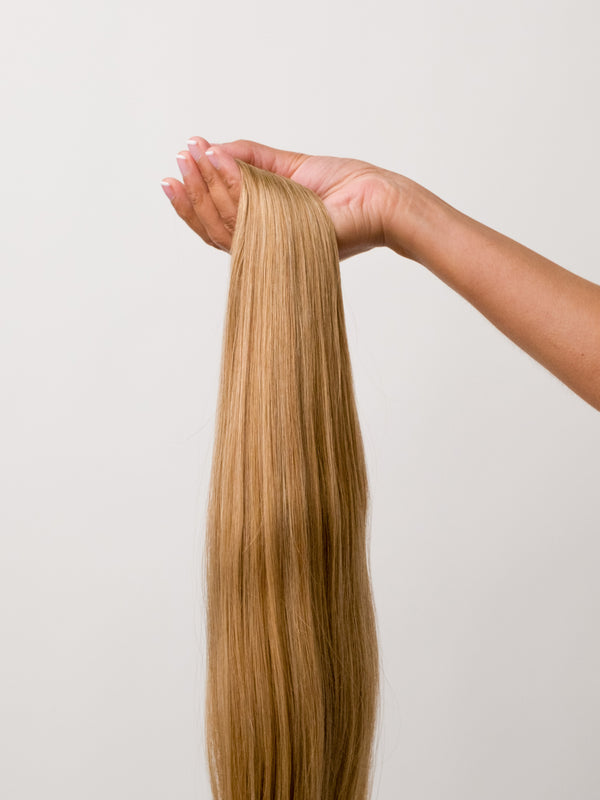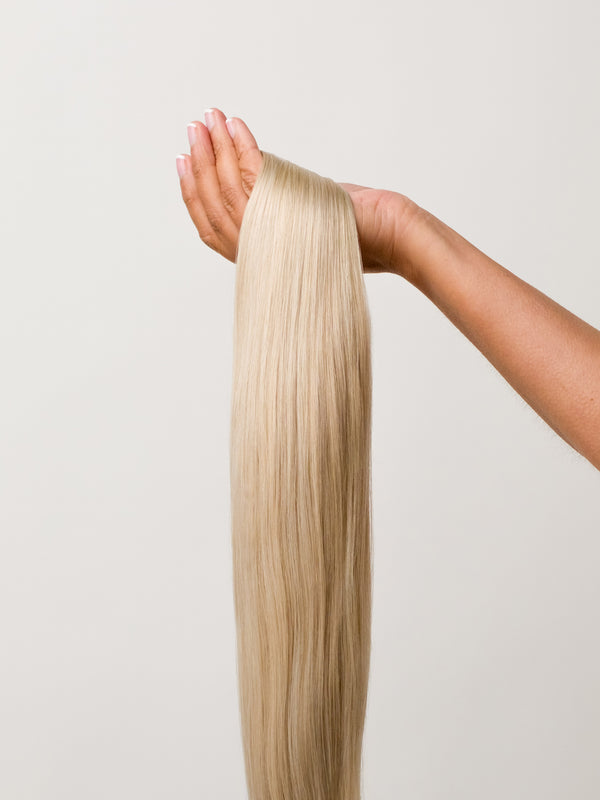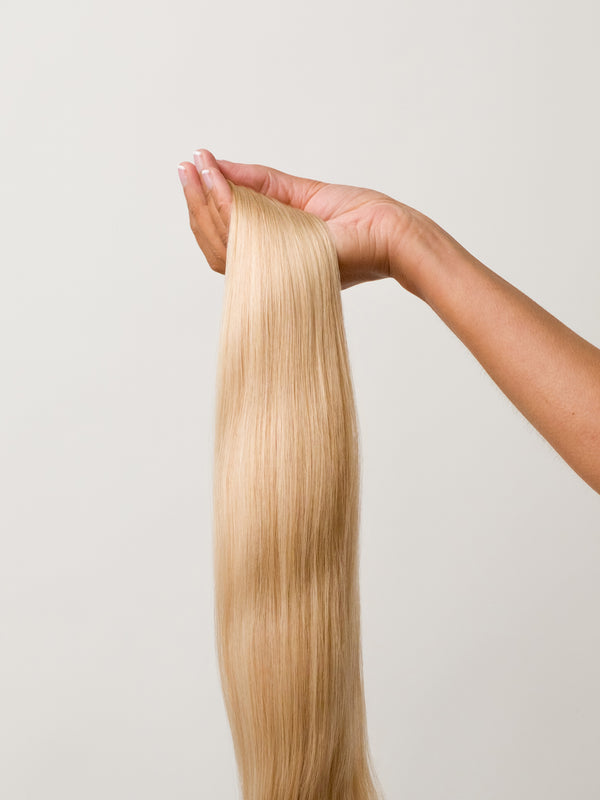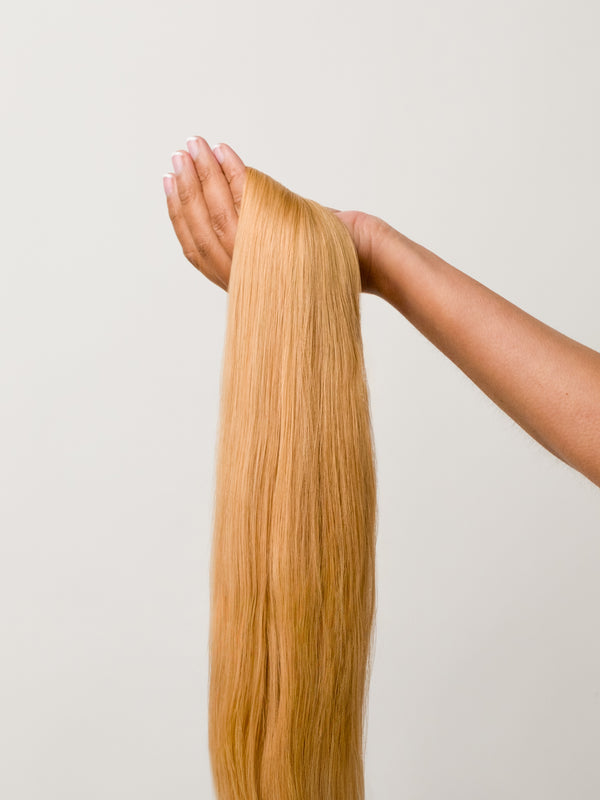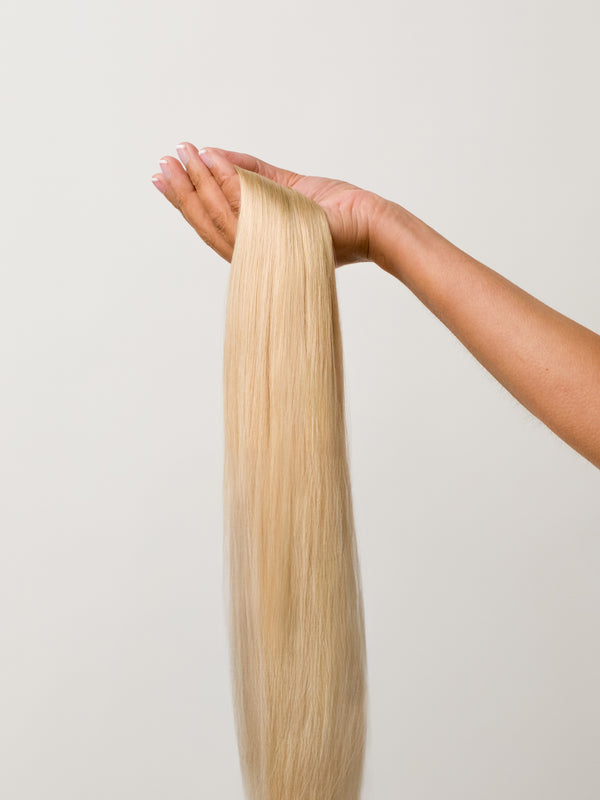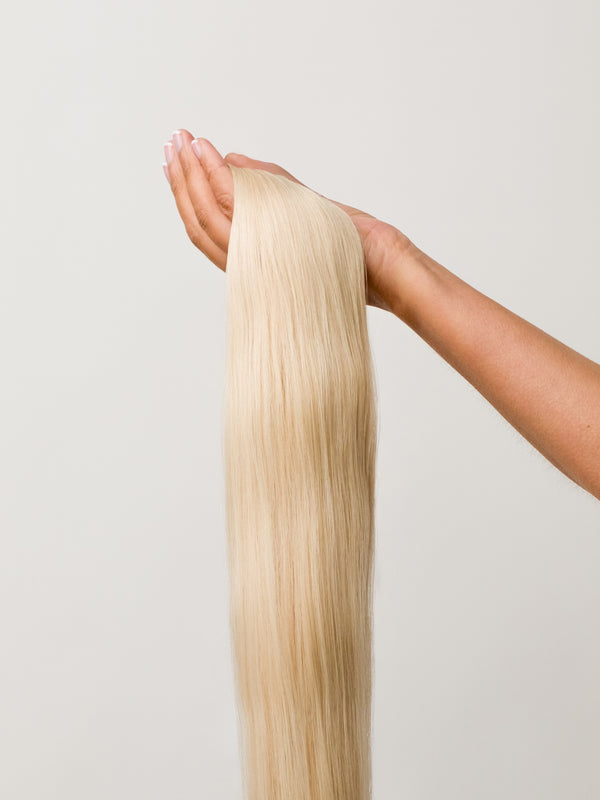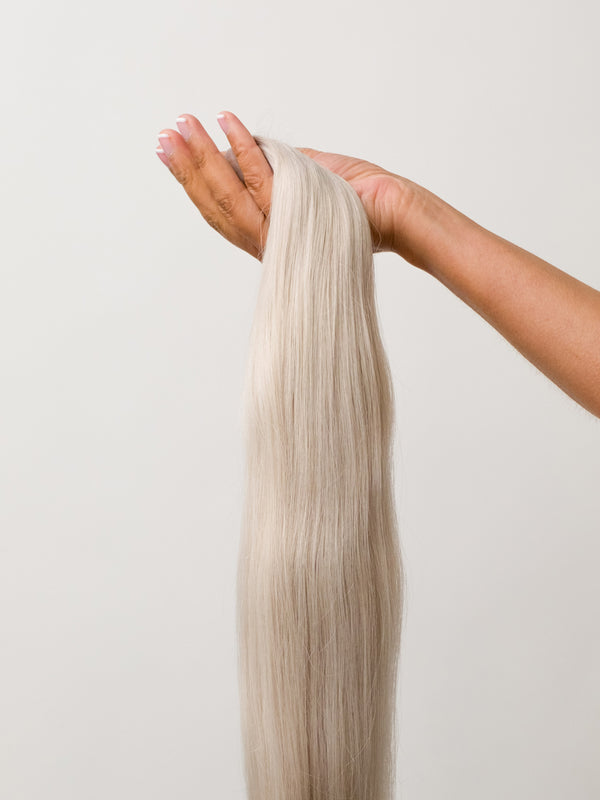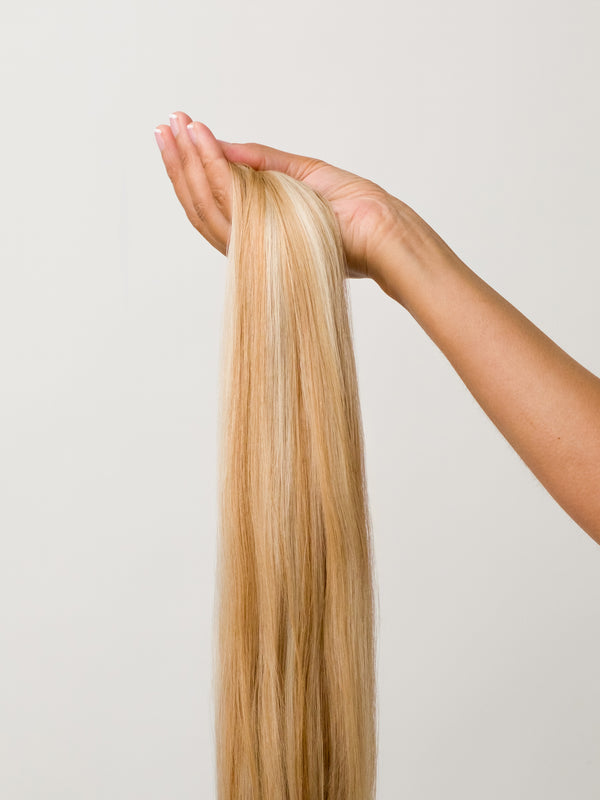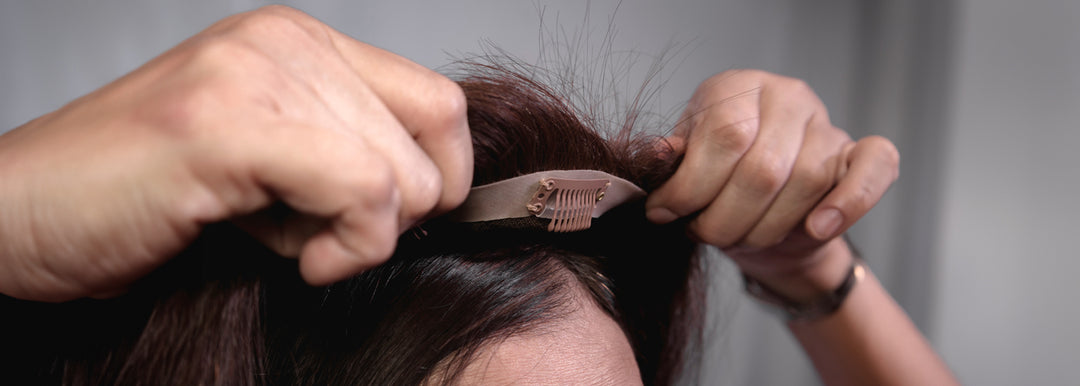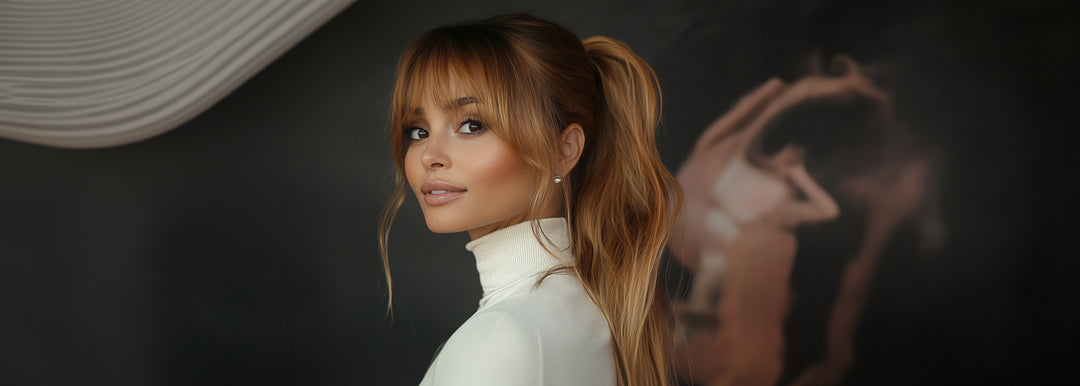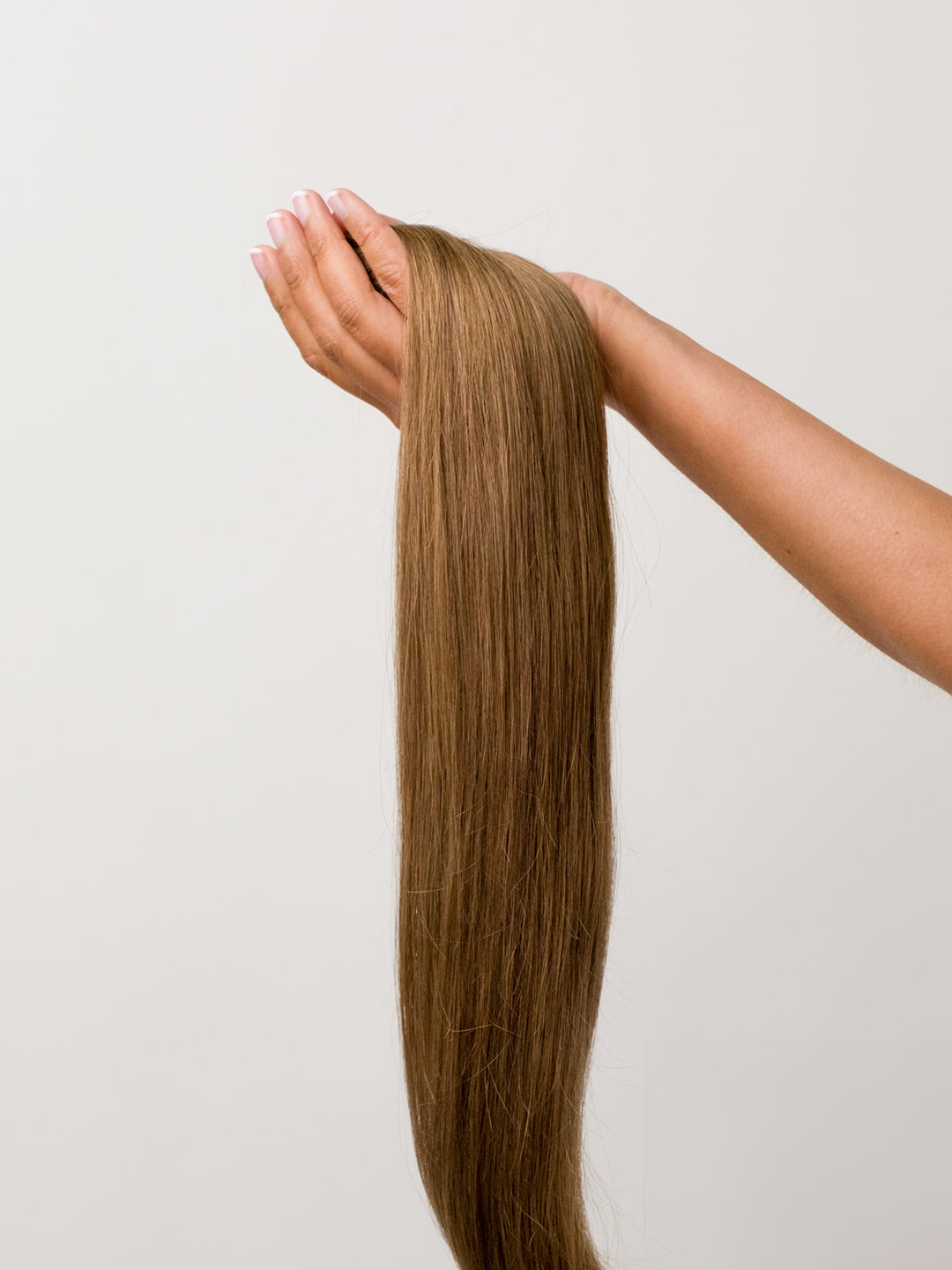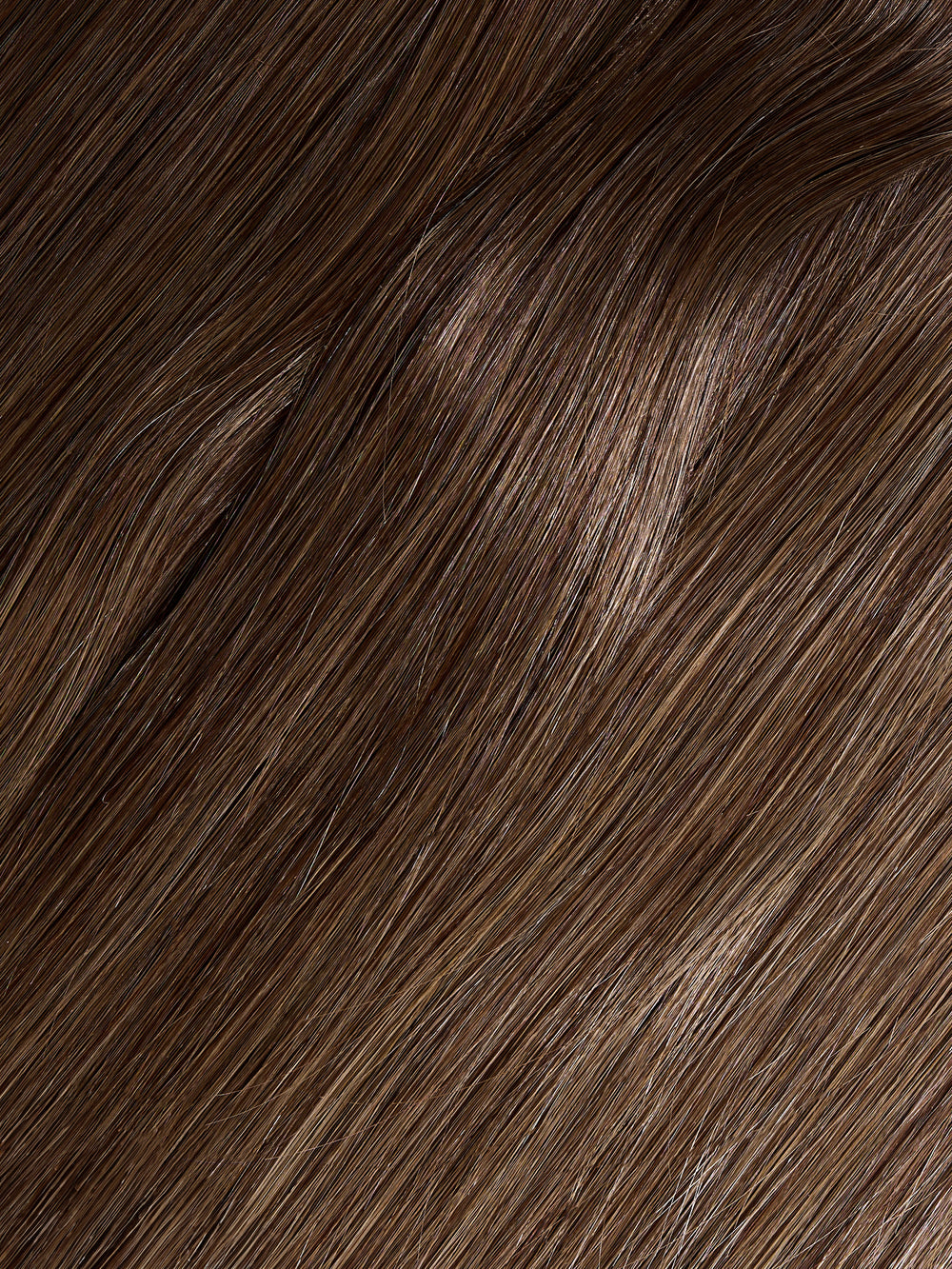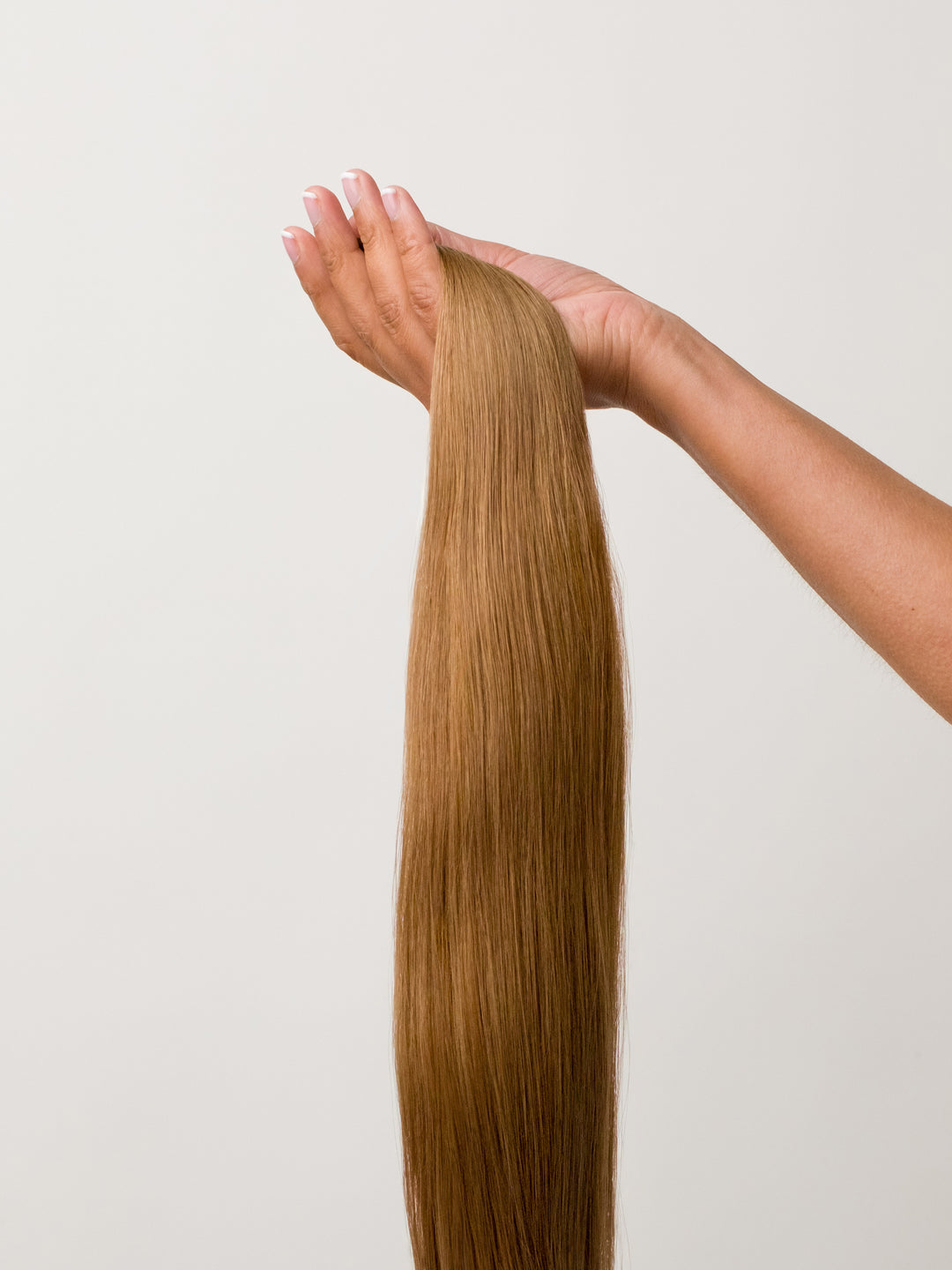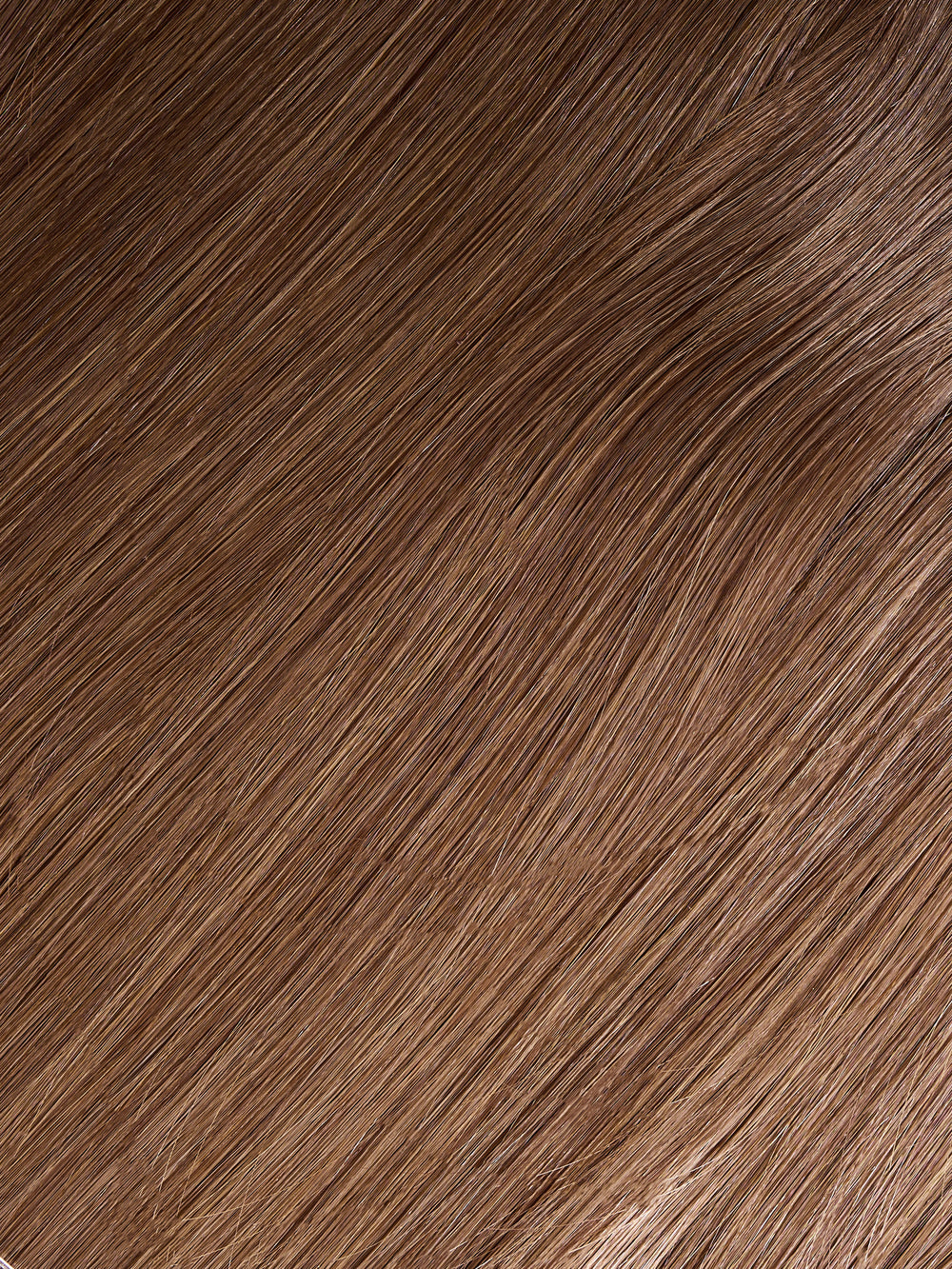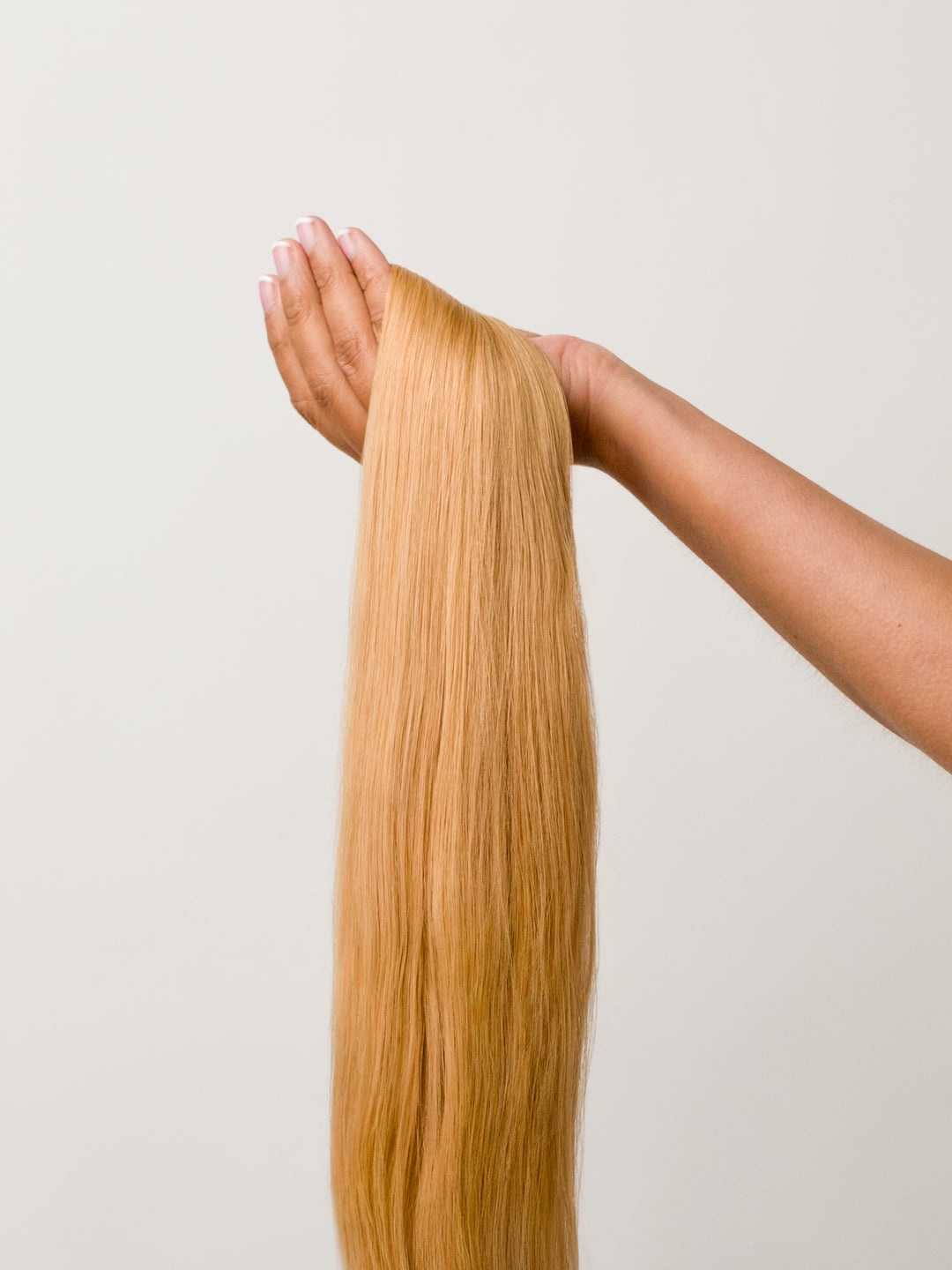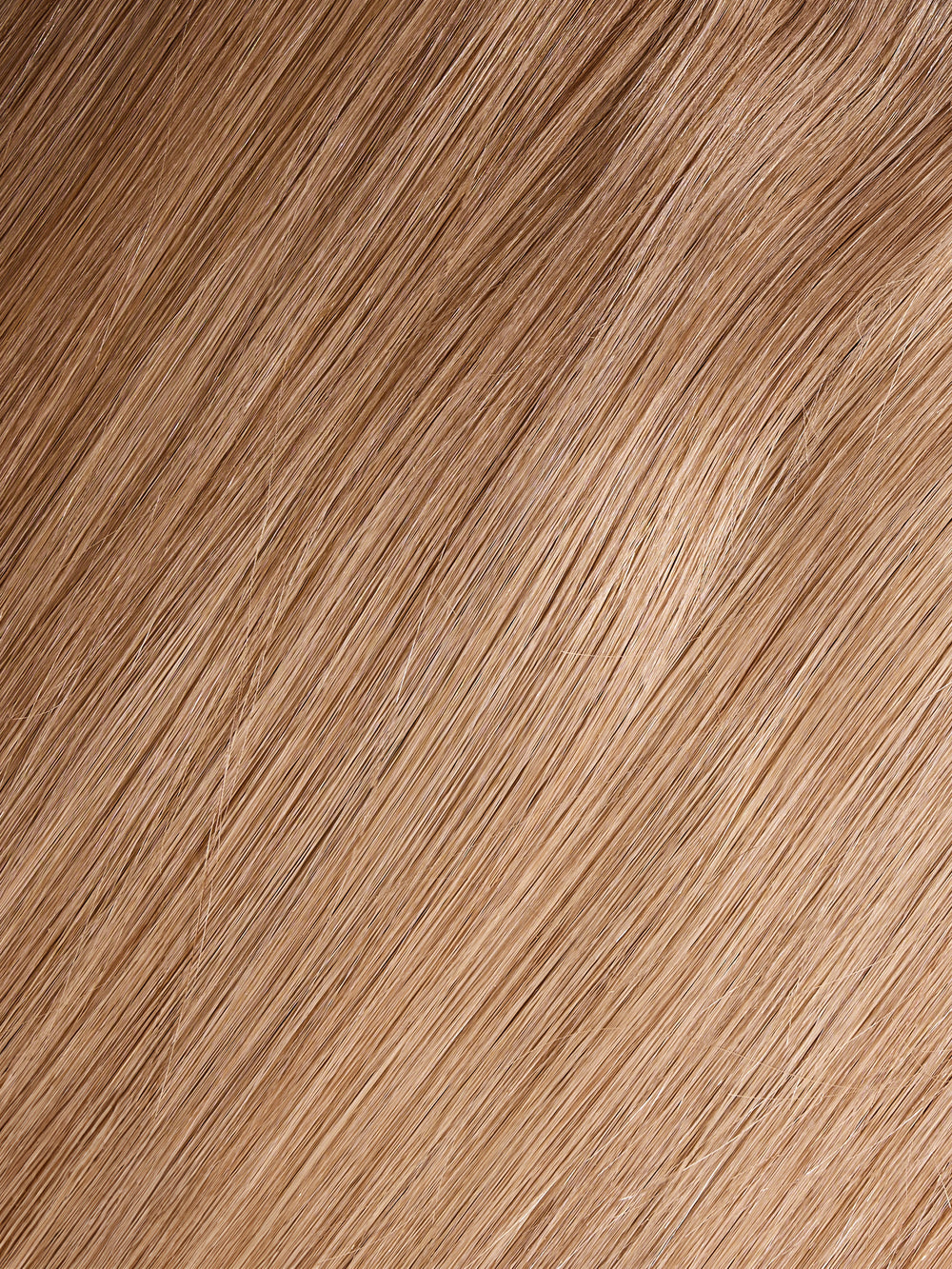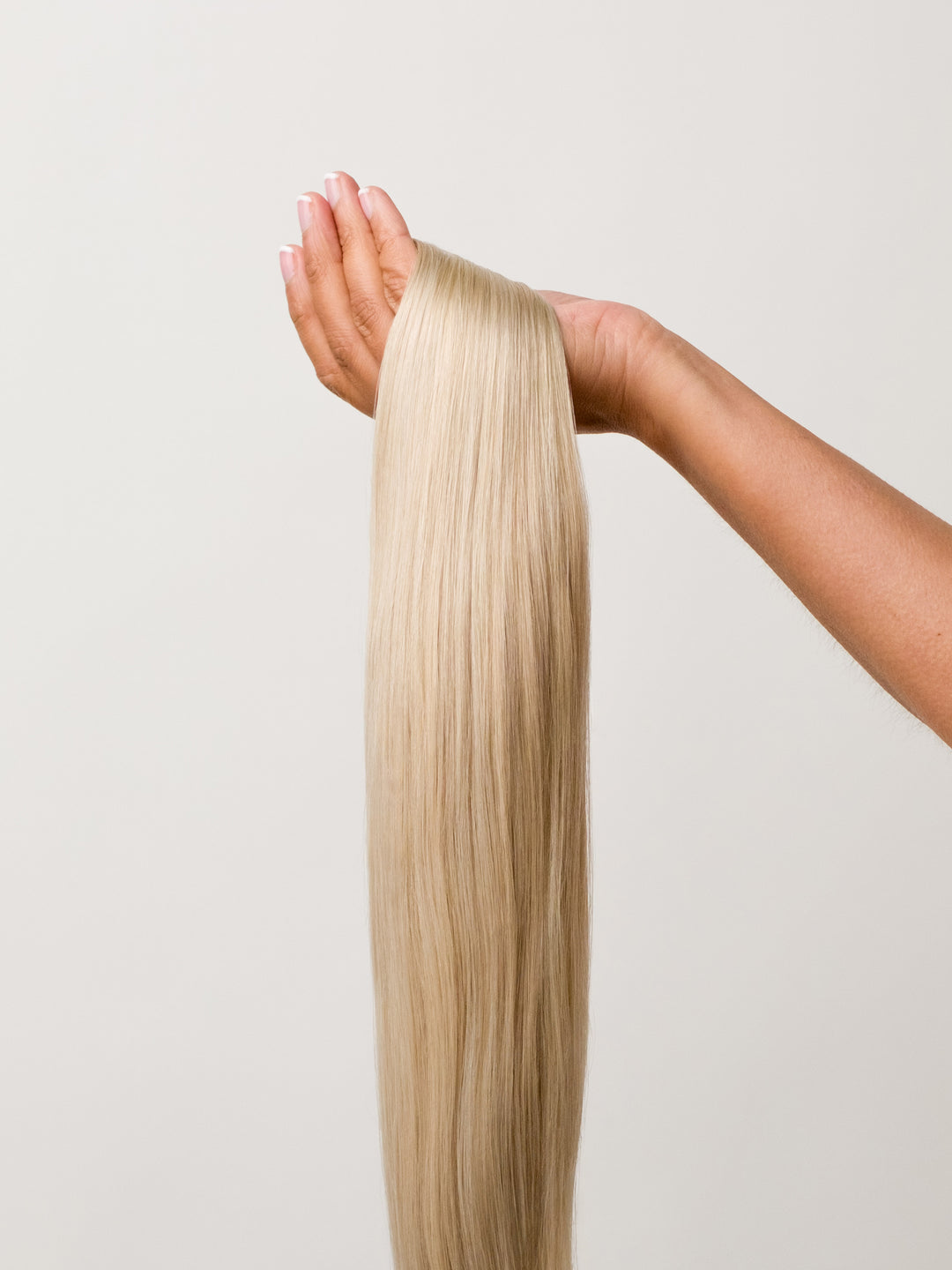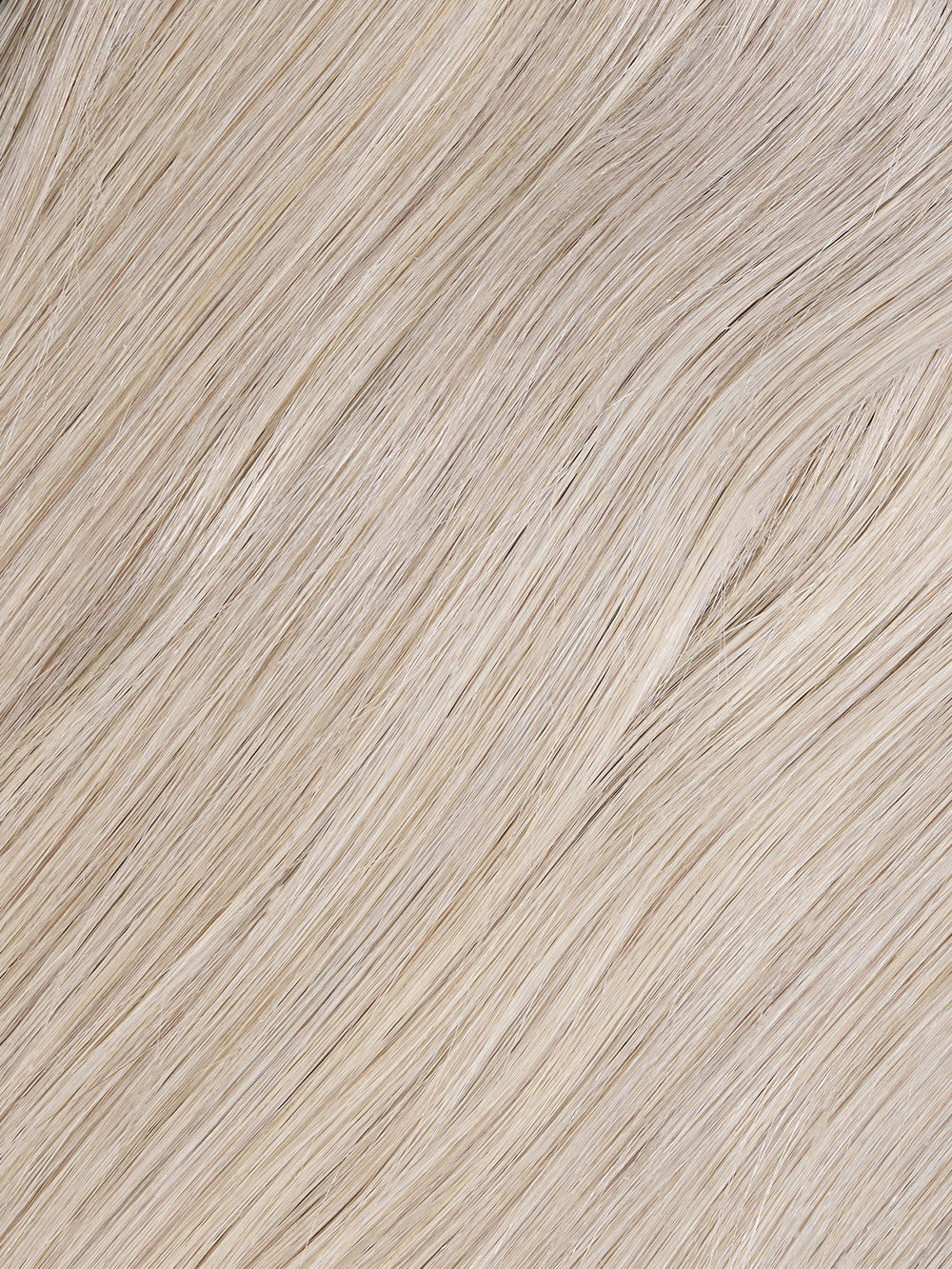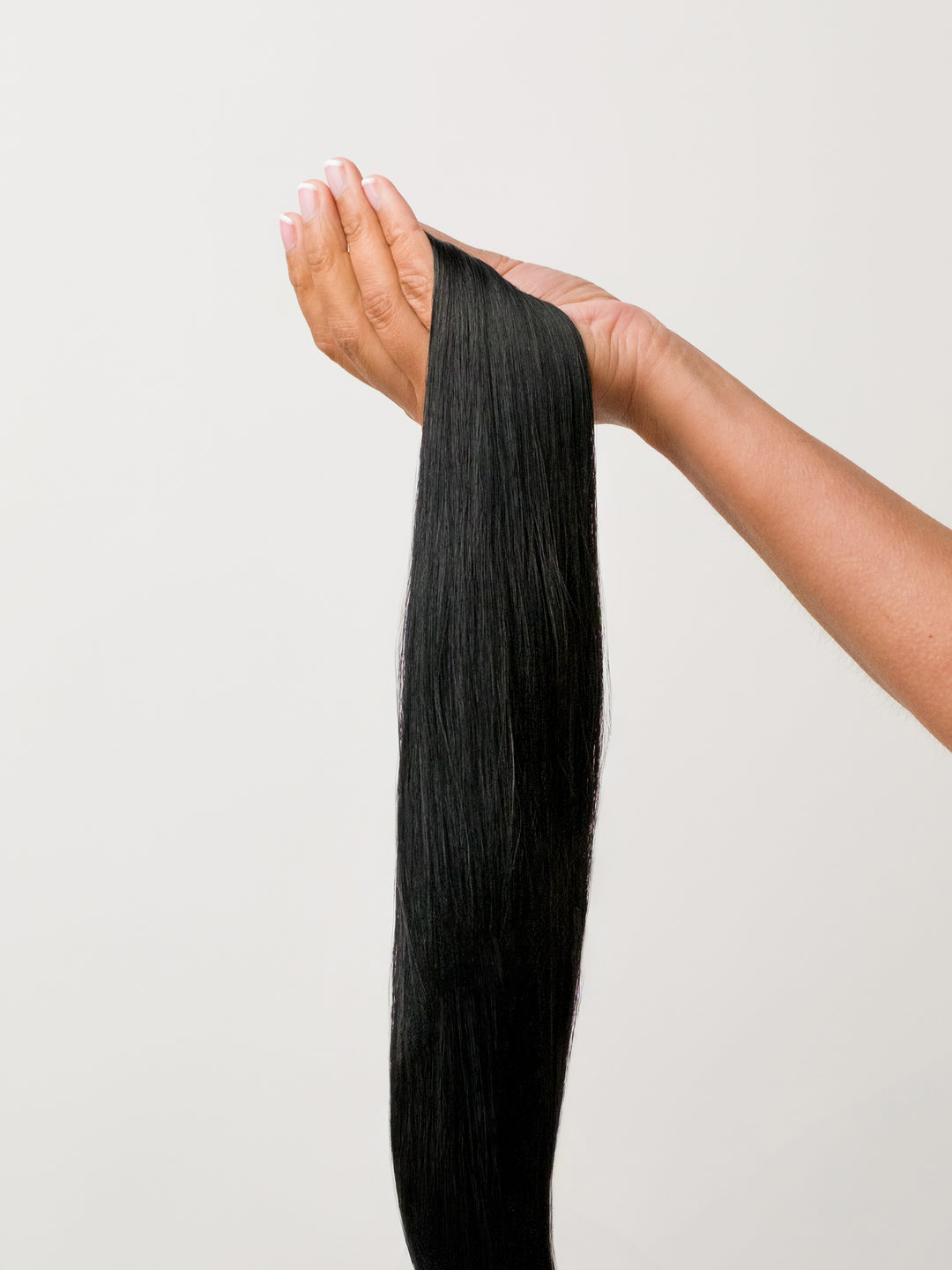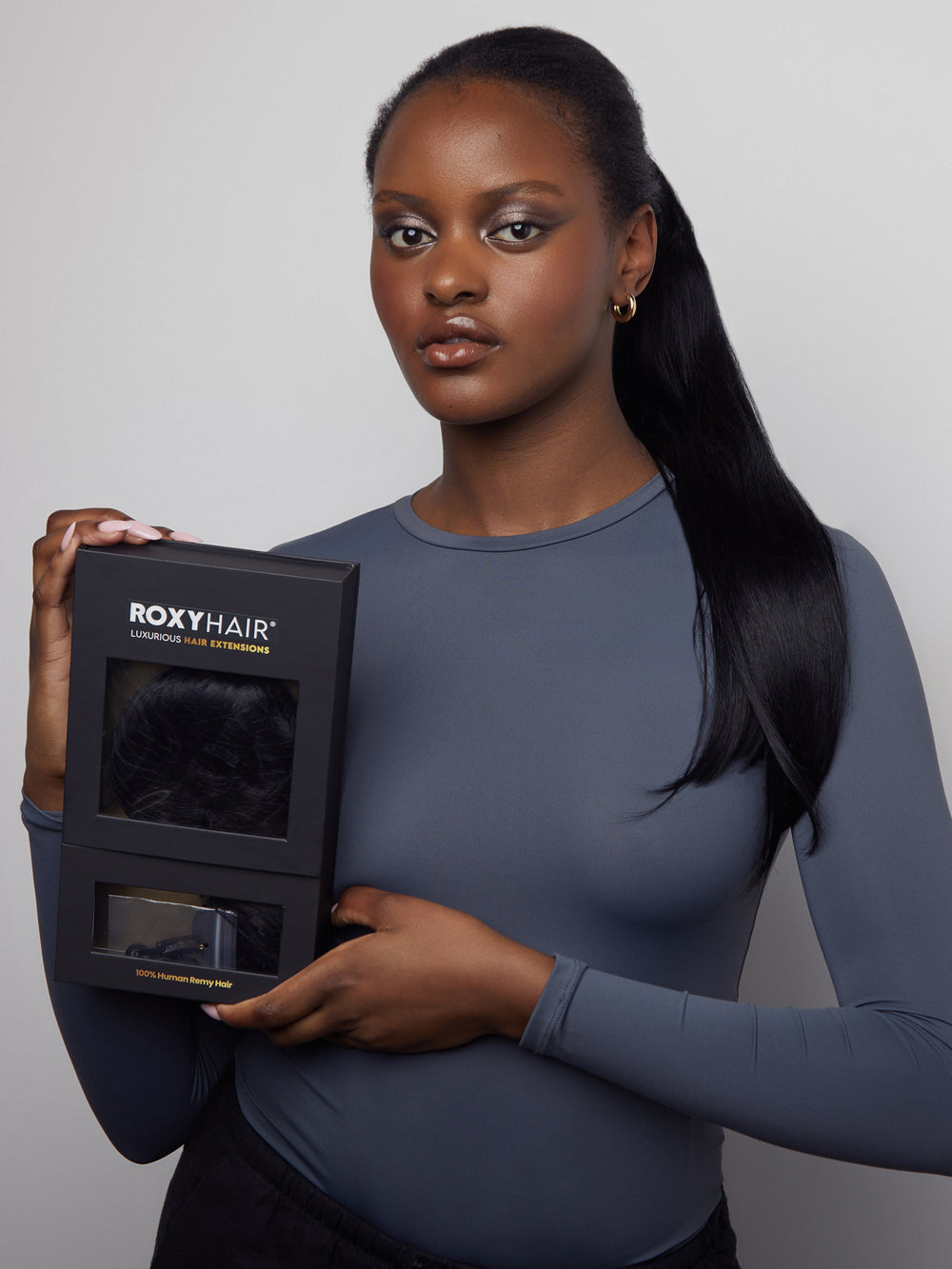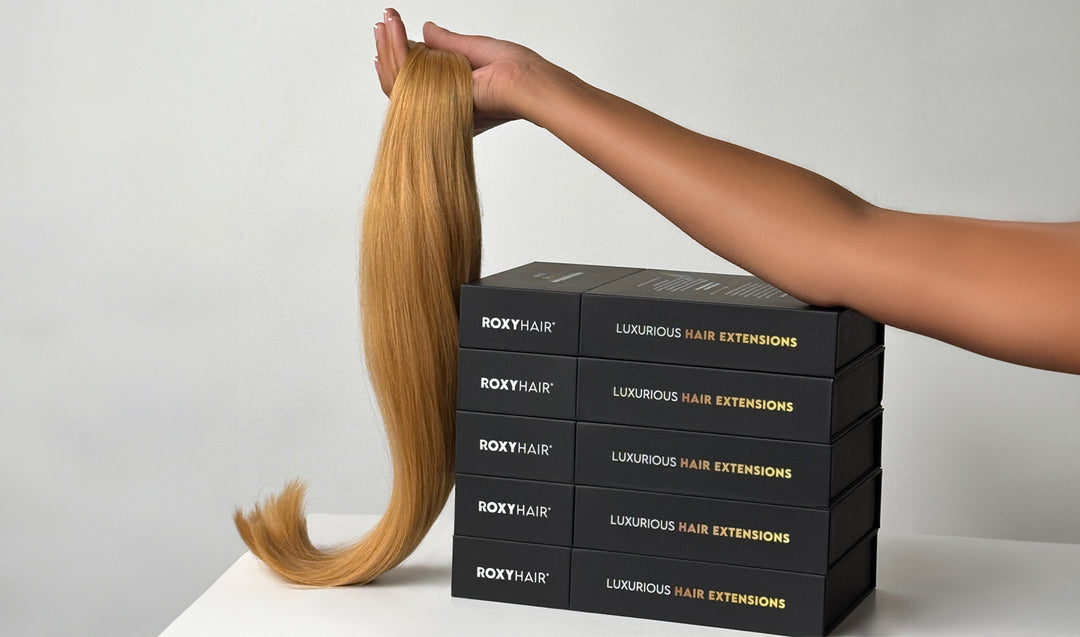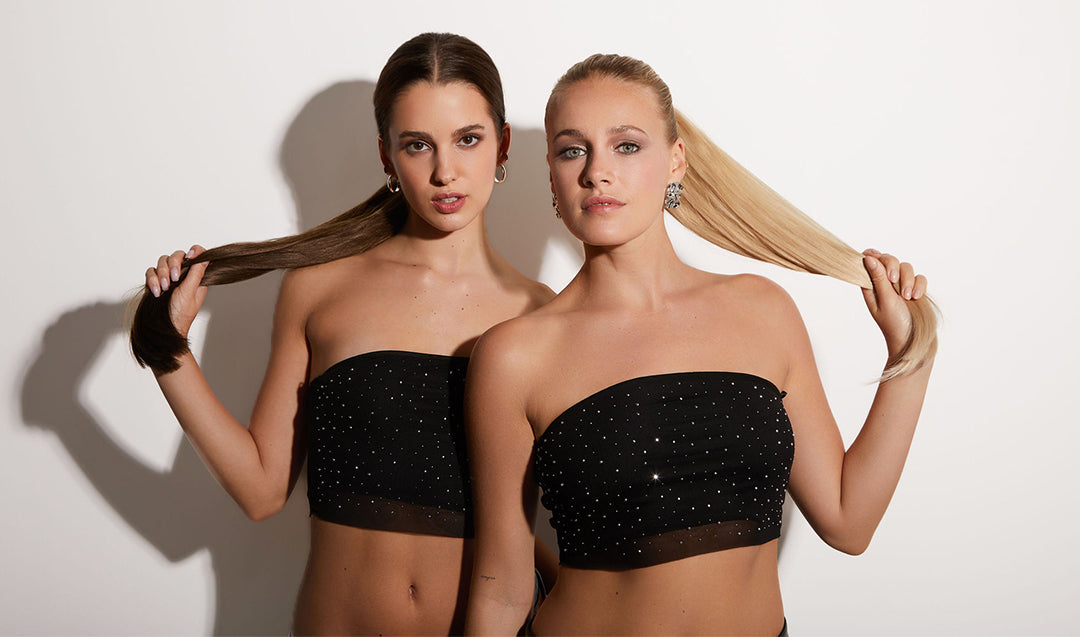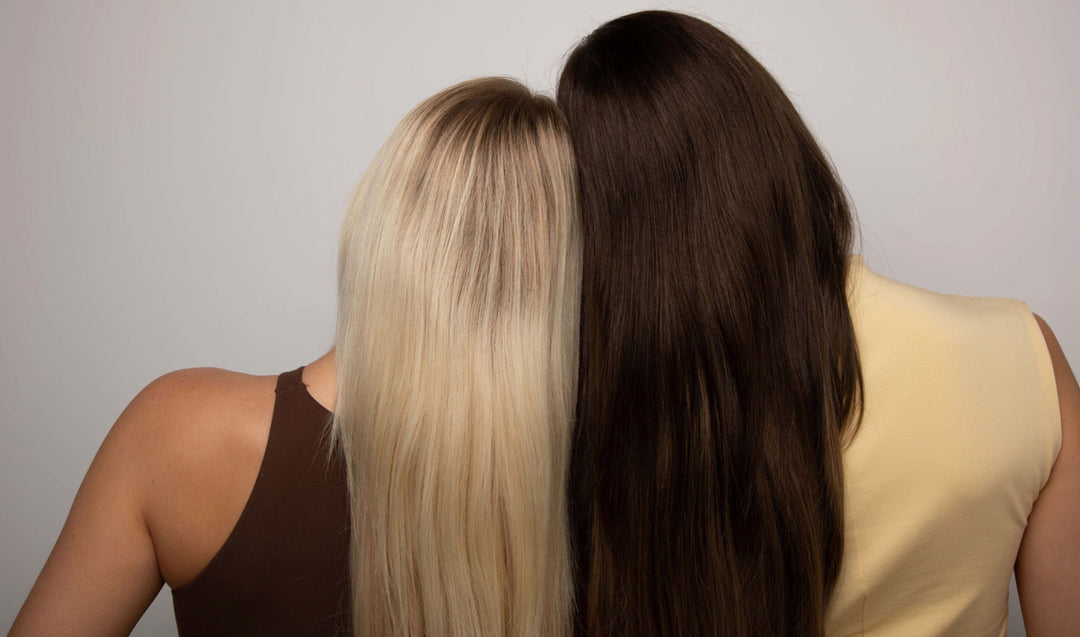Do hair extensions get split ends? They do, and it’s a common issue many people face. Reasons include lack of natural oils, frequent heat styling, and environmental factors. In this article, you’ll learn why it happens and how to maintain your extensions to prevent and treat split ends.
Key Takeaways
-
Hair extensions can get split ends just like natural hair due to lack of natural oils, heat styling, and environmental factors.
-
Proper care like gentle brushing, using the right products, and protective hairstyles can help prevent split ends in hair extensions.
-
Choosing high-quality extensions made from Remy or virgin hair can significantly reduce the risk of developing split ends.
Understanding Split Ends in Hair Extensions
Split ends are a common hair care concern that affects both natural hair and hair extensions. When fragments of the hair shaft become frayed or damaged, split ends occur, making the hair look dry, brittle, and unhealthy. For those with hair extensions, understanding split ends helps maintain their beauty and longevity.
Hair extensions can develop split ends just like natural hair due to various forms of damage. Recognizing and addressing split ends in hair extensions helps prevent further damage and keeps them in top condition.
What Are Split Ends?
Split ends, scientifically known as trichoptilosis, are the dry, brittle, and frayed ends of hair strands. They occur when fragments of the hair shaft become damaged and start to split, often resulting from a lack of moisture and excessive wear and tear. This damage is not only unsightly but also a sign of poor hair health.
In hair extensions, split ends indicate that the hair is becoming frayed or damaged, similar to natural hair. This often happens because hair extensions, unlike natural hair, do not benefit from the natural oils produced by the scalp, making them more prone to dryness and split ends.

How Split Ends Develop in Hair Extensions
Hair extensions lack the natural oils that protect and nourish natural hair, making them more susceptible to split ends. This absence of natural oils leads to increased dryness, making the hair more brittle and prone to splitting. The development of split ends in hair extensions is also influenced by wear and tear from external factors like brushing, heat styling, and environmental exposure.
When you consider the daily stress hair extensions endure - such as brushing, styling, and environmental exposure - it’s no wonder split ends appear. This wear and tear weaken the hair cuticle, making the hair shaft more prone to splitting and breakage. Knowing these factors allows you to take proactive steps in maintaining your extensions.
Causes of Split Ends in Hair Extensions
Split ends in hair extensions can be caused by a variety of factors, including heat styling, lack of natural oils, and environmental influences. Each of these factors can significantly impact the health and longevity of your hair extensions.
Various types of hair extensions have different susceptibilities to split ends, depending on their materials and application methods. Knowing the specific causes can help you take better care of your extensions and prevent pesky split ends from appearing.
Heat Styling
Excessive heat styling is a major culprit in damaging hair extensions. Tools like curling irons, straighteners, and blow dryers can lead to permanent damage and split ends. Using these tools frequently without proper heat protection can weaken the hair shaft and cause the hair cuticle to split and fray.
Lack of Natural Oils
Hair extensions do not receive the natural oils from the scalp that are essential for maintaining hydration and overall hair health. This lack of natural oils makes the extensions more prone to dryness and brittleness, leading to an increased risk of split ends.
Environmental Factors
Environmental factors such as sun exposure and chlorinated water can degrade the quality of hair extensions, making them more prone to breakage and split ends. These external elements can strip the hair of its moisture and weaken its structure, leading to damage over time.

Types of Hair Extensions and Their Susceptibility to Split Ends
Different types of hair extensions have varying susceptibility to split ends, influenced by their application methods and materials. Fusion, tape-in, and clip-in hair extensions each have their own unique characteristics and maintenance requirements.
Choosing high-quality hair extensions can significantly reduce the chances of developing split ends. Quality extensions feature aligned cuticles to minimize tangling and are often labeled as ‘Remy’ hair. Let’s delve into the specifics of each type.
Fusion Hair Extensions
Fusion hair extensions use a keratin-based adhesive to bond with natural hair, which involves heat. This bonding process makes fusion hair extensions more prone to split ends and heat-related damage.
However, with proper care, they can last up to six months.
Tape-In Hair Extensions
Tape-in hair extensions are applied using adhesive tape and are considered less damaging since they don’t require heat for application. The adhesive may weaken as time goes on. This can result in potential split ends.
A professional can maintain their health through proper removal and reapplication.

Clip-In Hair Extensions
Clip-in hair extensions are the easiest to apply and remove, and they don’t involve adhesives or heat, making them less likely to develop split ends. Their temporary nature allows for minimal wear and tear, preserving the quality of the hair.
Preventing Split Ends in Hair Extensions
Preventing split ends in hair extensions involves proper care and maintenance. Regular hydration, gentle handling, and protective hairstyles can significantly extend the lifespan of your extensions and keep them looking their best.
Good care practices, like using the right hair care products and gentle brushing techniques, can help maintain the health and beauty of your extensions.
Gentle Brushing Techniques
The right tools and techniques for brushing hair extensions help avoid breakage. A wide-tooth comb or hair extension brushes designed for extensions is recommended. Starting from the ends and moving upwards can help detangle without causing damage.
Brushing twice daily and using a leave-in conditioner can also ease the detangling process and reduce breakage.
Shop Roxy Hair
Using Proper Hair Care Products
Sulfate-free shampoos and conditioners are essential for retaining moisture in hair extensions. Conditioning, particularly focusing on the mid-lengths to ends, helps restore moisture and maintain softness.
Weekly hair masks can nourish and hydrate your extensions.
Protective Hairstyles
Protective hairstyles, such as loose braids or twists at night, help minimize friction and prevent tangling, which can lead to split ends. Silk or satin scarves and pillowcases reduce friction and prevent damage to hair extensions.
These practices can significantly extend the life of your extensions and keep them looking healthy.
Treating Split Ends in Hair Extensions
Treating split ends in hair extensions involves regular trims, deep conditioning treatments, and seeking professional help. These methods can help maintain the health and appearance of your extensions while minimizing further damage.
Regular trims every 6-8 weeks remove developing split ends and maintain hair extensions’ health. Additionally, chemical treatments, such as bleaching and dyeing, can weaken hair extensions and contribute to split ends. Using a split-end trimmer allows for targeting only the damaged parts of hair without sacrificing length.
Regular Trimming
Trimming hair extensions every 6-8 weeks is crucial to eliminate split ends and prevent further damage. Using sharp scissors designed for hair cutting and making one or two snips above the visible damage ensures a clean cut.
Techniques like hair dusting can help trim off dead or damaged ends without losing significant length.
Deep Conditioning Treatments
Weekly deep conditioning sessions are vital for rehydrating hair extensions and minimizing split ends. Applying conditioner to the length of the hair extensions, especially the ends, and allowing it to set according to package instructions can fortify the hair.
Hair masks containing moisture and proteins are particularly beneficial.
Professional Salon Services
Professional help ensures experienced hands handle the delicate strands. Professional stylists can provide specialized care, such as careful trimming and rejuvenating treatments, to maintain the overall health and appearance of hair extensions.
Regular visits to a salon can prolong the lifespan of your extensions and maintain their beauty.
Choosing High Quality Hair Extensions
High-quality hair extensions are the first line of defense against split ends. High-quality extensions from Roxy Hair, made from 100% Remy hair, can significantly reduce the likelihood of split ends and provide a more realistic appearance that can be treated like natural hair.
Selecting low-quality hair extensions can lead to irreversible damage and split ends.
Indicators of Quality Hair Extensions
Indicators of high-quality hair extensions include a higher percentage of strands being the same length, ensuring consistent thickness from root to tip. Extensions should lay flat without tapering, and minimal shedding during combing signifies good quality.
Performing a burn test can also help distinguish between synthetic and human hair.
Brands Known for Durable Hair Extensions
Several reputable brands are known for producing durable fabulous hair extensions. Common installation methods include lace front wigs, sew-ins, tape-ins, and glue, especially when wearing hair extensions.
100% human hair extensions can withstand some heat and styling, making them a durable choice.
Summary
In summary, split ends in hair extensions are a common issue that can be managed with proper care and maintenance. Understanding the causes, such as heat styling, lack of natural oils, and environmental factors, is crucial for prevention. Choosing high-quality extensions and implementing good care practices can significantly extend the life of your hair extensions and keep them looking fabulous.
By following these tips and seeking professional help when needed, you can enjoy luscious locks and fabulous hair extensions that last. Remember, the key to maintaining beautiful extensions is consistent care and attention.
Frequently Asked Questions
Can hair extensions get split ends just like natural hair?
Absolutely, hair extensions can get split ends just like your natural hair. Just keep them moisturized and avoid too much heat to help prevent damage!
How can I prevent split ends in my hair extensions?
To prevent split ends in your hair extensions, stick to gentle brushing, use sulfate-free shampoos and conditioners, and don’t skip on deep conditioning treatments. Also, consider protective hairstyles to keep them looking fab!
What are the best types of hair extensions to avoid split ends?
To avoid split ends, go for high-quality hair extensions made from 100% Remy or virgin hair. Clip-in extensions are also a smart choice since they don’t use adhesives or heat, keeping your hair healthier.
How often should I trim my hair extensions to prevent split ends?
You should trim your hair extensions every 6-8 weeks to keep those pesky split ends at bay and keep them looking fresh. Regular trims help maintain their overall health too!
Are there any professional services that can help maintain my hair extensions?
Absolutely! Professional salon services can give your hair extensions the TLC they need with trimming and rejuvenating treatments to keep them looking fab.





